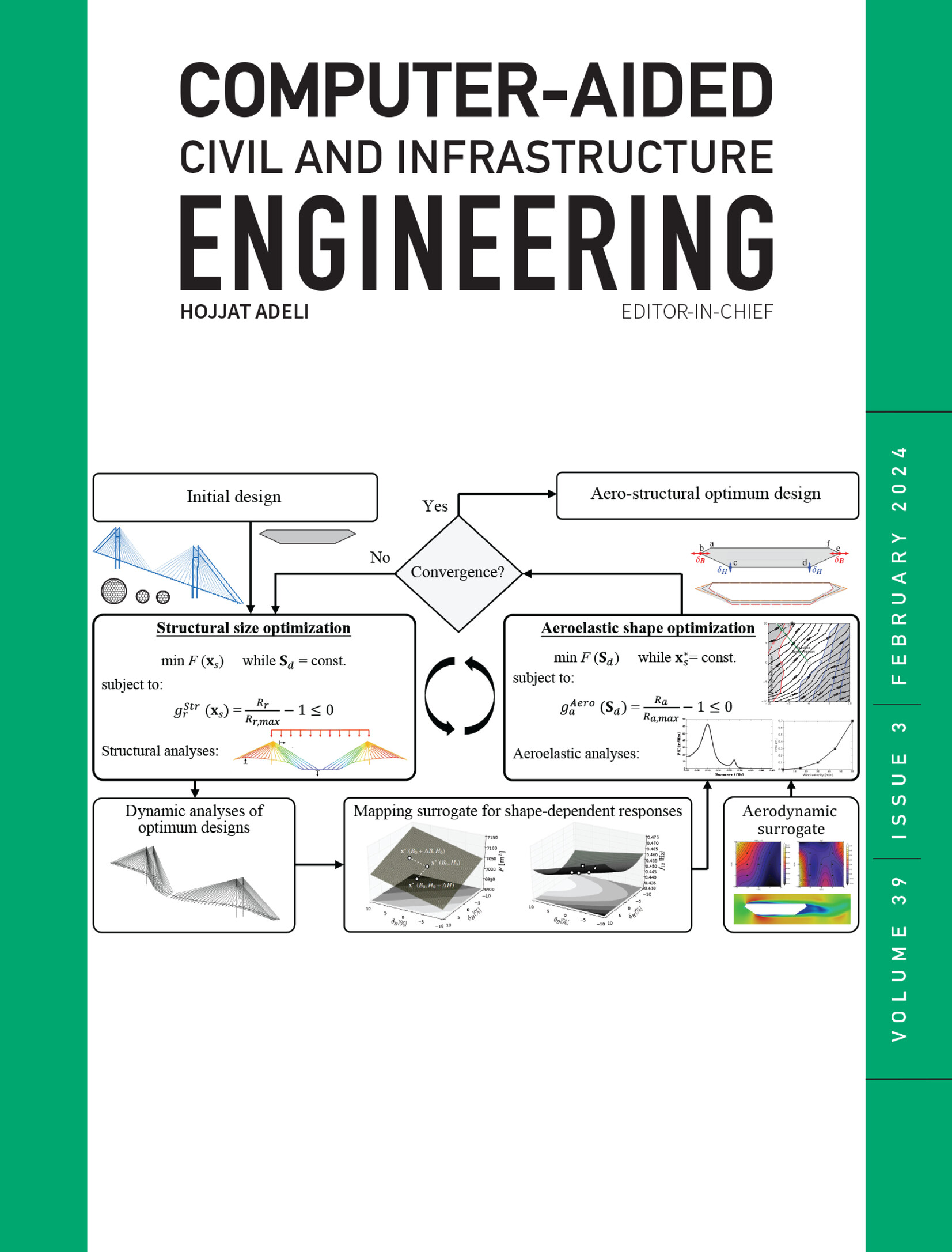Work‐phase recognition in construction machinery using gated recurrent unit with attention and fractional calculus features
IF 9.1
1区 工程技术
Q1 COMPUTER SCIENCE, INTERDISCIPLINARY APPLICATIONS
引用次数: 0
Abstract
Accurate work‐phase recognition is essential for advancing energy efficiency and intelligent control. However, significant challenges impede the advancement of work‐phase recognition technology, including the complexity of sensor input signals, reliance on manual intervention for time‐frequency feature selection, limited model generalization, and suboptimal recognition accuracy. To address these issues, this paper proposes a deep learning framework that combines a feature fusion method that integrates gated recurrent unit (GRU) network feature extraction and fractional calculus feature (FCF) enhancement with a Bayesian‐optimized random forest (RF) classifier. A GRU network with an integrated attention mechanism effectively reduces the need for manual feature selection, whereas FCF enhancement expands the feature space through fractional integration and differentiation without additional sensors. Feature‐level data fusion and Bayesian optimization improve the generalization capability of the RF model. The experimental results for two typical types of machinery demonstrated recognition accuracies of 99.38% and 99.45% for work‐phase recognition, confirming the superior performance of the proposed framework.基于注意力和分数阶微积分特征的门控循环单元在工程机械工作阶段识别中的应用
准确的工作阶段识别对于提高能源效率和智能控制至关重要。然而,重大挑战阻碍了工作阶段识别技术的进步,包括传感器输入信号的复杂性,依赖于人工干预的时频特征选择,有限的模型泛化,以及次优的识别精度。为了解决这些问题,本文提出了一个深度学习框架,该框架将融合了门控循环单元(GRU)网络特征提取和分数阶微积分特征(FCF)增强的特征融合方法与贝叶斯优化随机森林(RF)分类器相结合。具有集成注意机制的GRU网络有效地减少了人工特征选择的需要,而FCF增强通过分数积分和微分扩展了特征空间,而不需要额外的传感器。特征级数据融合和贝叶斯优化提高了射频模型的泛化能力。在两种典型机械上的实验结果表明,工作阶段识别的准确率分别为99.38%和99.45%,验证了所提框架的优越性能。
本文章由计算机程序翻译,如有差异,请以英文原文为准。
求助全文
约1分钟内获得全文
求助全文
来源期刊
CiteScore
17.60
自引率
19.80%
发文量
146
审稿时长
1 months
期刊介绍:
Computer-Aided Civil and Infrastructure Engineering stands as a scholarly, peer-reviewed archival journal, serving as a vital link between advancements in computer technology and civil and infrastructure engineering. The journal serves as a distinctive platform for the publication of original articles, spotlighting novel computational techniques and inventive applications of computers. Specifically, it concentrates on recent progress in computer and information technologies, fostering the development and application of emerging computing paradigms.
Encompassing a broad scope, the journal addresses bridge, construction, environmental, highway, geotechnical, structural, transportation, and water resources engineering. It extends its reach to the management of infrastructure systems, covering domains such as highways, bridges, pavements, airports, and utilities. The journal delves into areas like artificial intelligence, cognitive modeling, concurrent engineering, database management, distributed computing, evolutionary computing, fuzzy logic, genetic algorithms, geometric modeling, internet-based technologies, knowledge discovery and engineering, machine learning, mobile computing, multimedia technologies, networking, neural network computing, optimization and search, parallel processing, robotics, smart structures, software engineering, virtual reality, and visualization techniques.

 求助内容:
求助内容: 应助结果提醒方式:
应助结果提醒方式:


